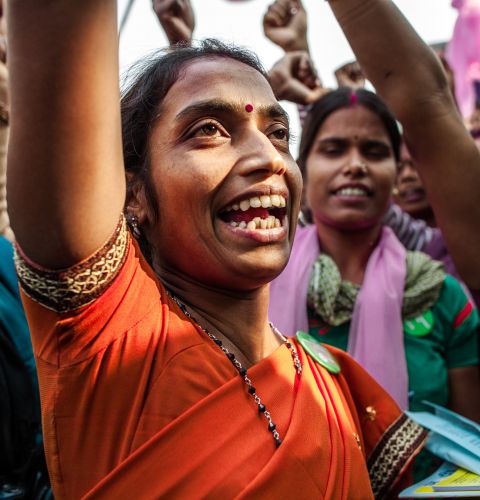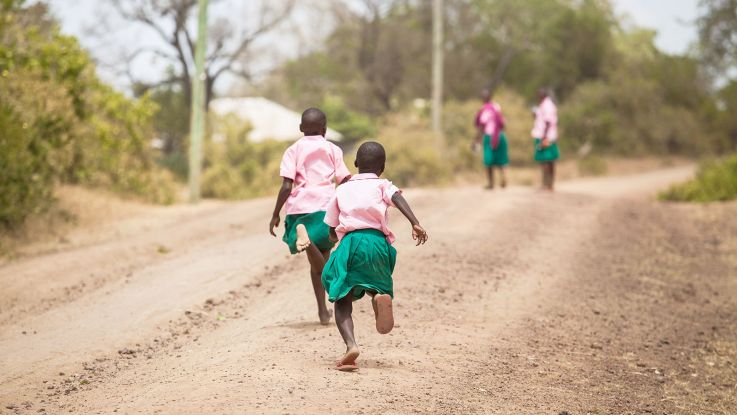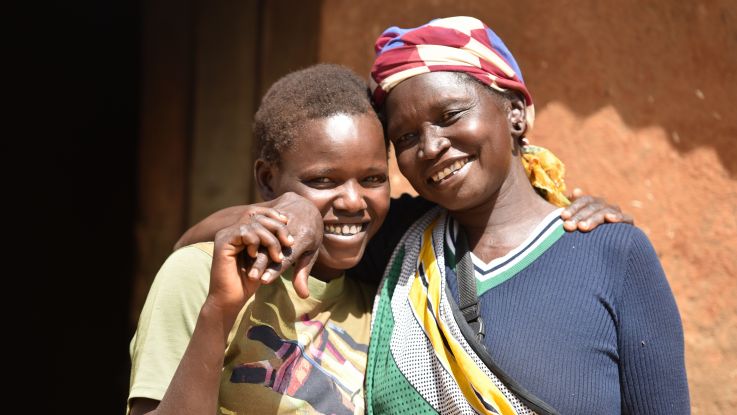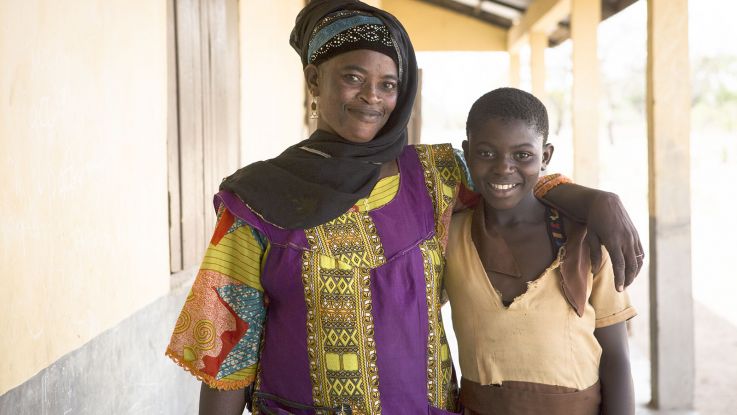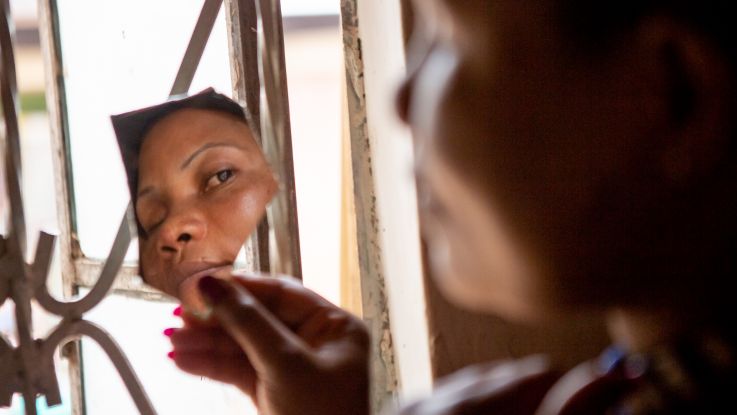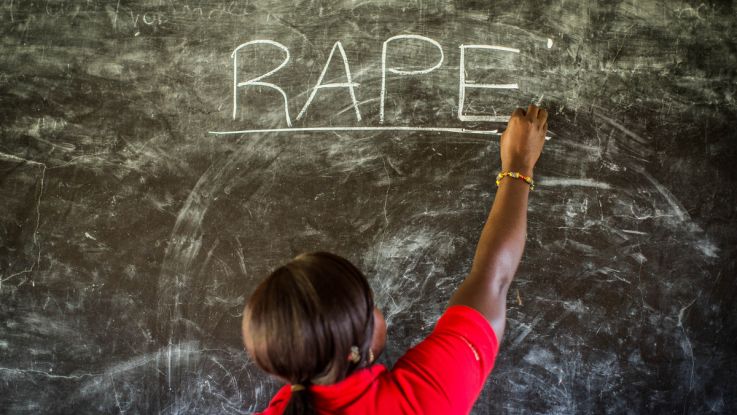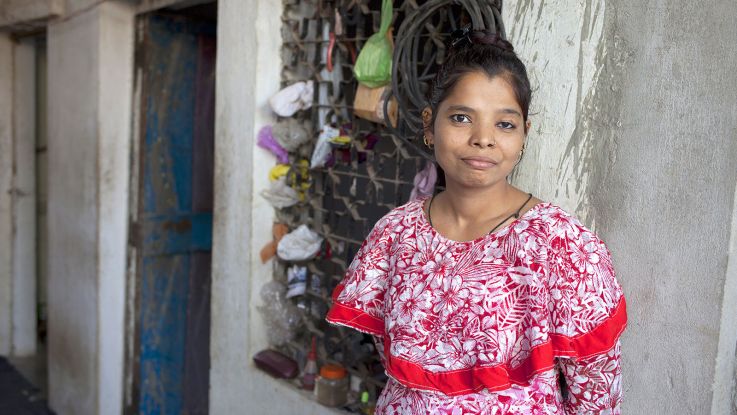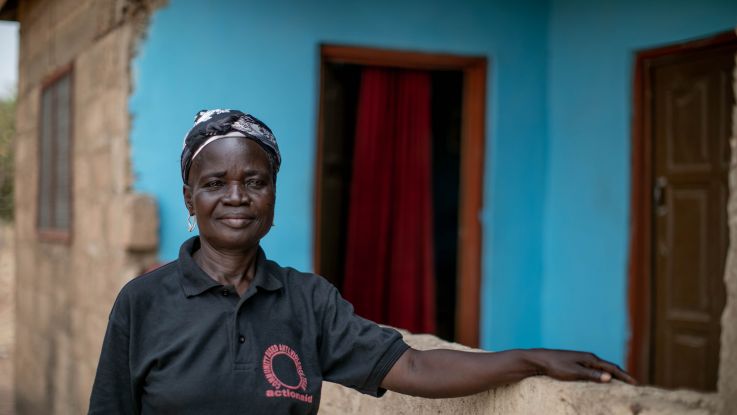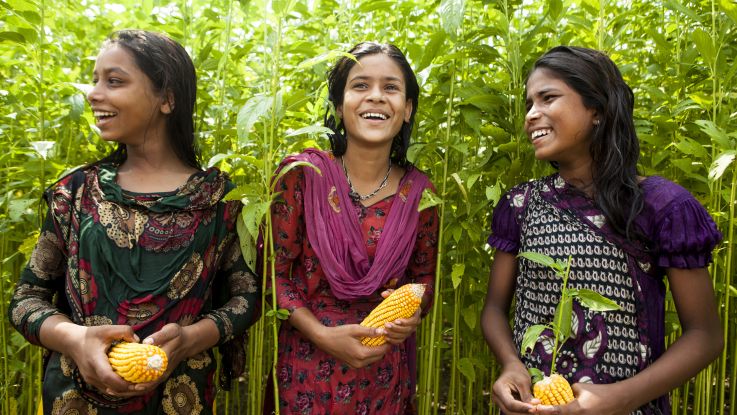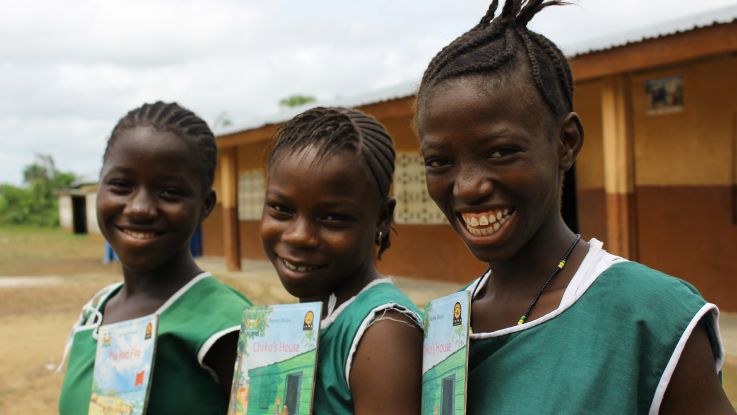Violence against women and girls (VAWG)
Do women living in poverty face a greater risk of violence?
Violence is a global problem, but women and girls living in poverty are even more at risk. Often, survivors can’t get medical support because they can’t afford it or because they are too far away from a hospital.
Many can’t or don’t want to go to the police, sometimes due to fear of retribution or because of an acceptance of violence in their society. Girls may drop out of school and end up being forced to marry early. Many are left dealing with the emotional and physical impacts of the abuse on their own.
How is ActionAid ending violence against women and girls?
ActionAid works with communities to prevent and respond to violence against women and girls and create long-term change for good. We fund women's groups and networks across the world, who train parents, teachers, local police and legal advisers to recognise the signs of violence and to report it.
Our Girls' Clubs are run by local women and teach girls about their rights and help them build confidence. We support women and girls to earn sustainable livelihoods, so they can afford life's necessities without being exploited. Because when women and girls know and claim their rights, their courage and resilience is astonishing. We have successfully campaigned to change laws around FGM, women’s reproductive rights, child marriage and domestic violence.
Our dedicated local staff are ending violence against women and girls and helping change lives, for good. We won’t stop until women and girls are out of danger, out of poverty and on track to create the future they want.
Economic inequality makes women more vulnerable to violence
On almost every measure, women are economically worse off than men.4 Poverty and economic inequality increase a woman’s risk of being subjected to violence. They undermine her voice and bargaining power at home, work and in wider society.
Women and girls living in poverty are less able to leave abusive partners as they are more reliant on them, they are more likely to live in areas which are unsafe and they are less likely to have access to education.
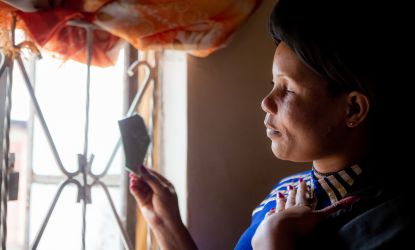
Domestic abuse in Uganda
Millicent’s husband was physically and mentally abusive towards her, often humiliating her in front of her three children. One day, he poured acid over her face, causing her to lose an eye.
Millicent feared for her life and the lives of her children until she was referred to the ActionAid Gender-Based Violence Shelter for support.
There, she and her children were provided with a safe place to sleep, counselling and legal support. For more than a year, ActionAid pursued cases against Millicent’s husband in the courts, and he was convicted.
Millicent and her children are now free from violence and can start rebuilding their lives.
ActionAid Uganda runs 10 shelters for survivors of violence across the country, providing a lifeline for women and girls to escape abuse.
Milicent was supported by ActionAid after enduring years of violent abuse by her husband. She was given temporary accommodation, emotional support and legal aid to ensure her husband was put in prison.
Karin Schermbrucker/ActionAid
Gender-based violence at work
Abuses faced by women at work could include anything from sexual, physical and psychological harassment to bullying by managers and supervisors, body searches, beatings, forced pregnancy tests, dismissal when pregnant and violations of sexual and reproductive health and rights.
Appalling neglect of workplace safety standards, along with pressure to work long hours in toxic conditions, cause physical and psychological harm, injury and even death. Women workers courageously seek ways to come together to challenge work-based violence and exploitation. However, they are frequently met with threats and further violence by employers.
Gender-based violence in schools
The World Health Organisation estimates that 150 million girls are sexually assaulted every year, with many of these attacks occurring on the way to school or at school.5
ActionAid creates safe spaces like girls’ clubs within schools. Here, girls can discuss their needs and take concrete action to raise awareness of girls’ rights to education and to a life free from violence. We support women and girls with education and vocational skills so that they can earn a living and afford life’s necessities without being exploited.
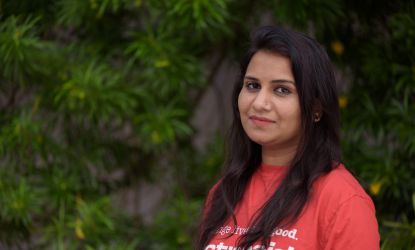
Sexual violence in India
Every 15 minutes, a woman or girl is raped in India. ActionAid helps to run a One-Stop Crisis Centre in Madhya Pradesh, which provides shelter, medical care, legal and psychological counselling services for women and girls who have experienced violence.
Jyoti, who is herself a survivor of domestic abuse, works at the Centre. As a counsellor and outreach worker, Jyoti now helps other survivors; she’s counselled 300 girls in eight months.
She does this because she wants to give back to the centre that helped her rebuild her own life. Each time she helps a girl to begin healing from a traumatic incident, Jyoti says she sleeps easier at night. She says:
First and foremost, we need to provide [survivors] with a friendly space so that they can start trusting where they have come to."
Jyoti, is a survivor of domestic violence. She now works as a counsellor at the One-Stop Crisis Centre in Bhopal, India, providing support for women and girls.
Smita Sharma/ActionAid
The links between child marriage and VAWG
Girls who marry as children face a higher risk of domestic violence than women who marry freely as adults.6 Around the world, we have seen young survivors married off as children to their attackers or rapists. Child marriage robs them of their childhoods, education, health and freedom, and subjects girls to rape and abuse for the rest of their lives.7
Girls are often physically and emotionally unprepared for sexual activity, pregnancy and childbirth. Every year, one million girls under the age of 15 give birth.8 Complications during pregnancy and childbirth is the second highest cause of death for girls aged 15–19 worldwide.9
Reducing child marriage and the adolescent birth rate is necessary to not only improve the sexual and reproductive health and rights of women and girls, but also to reduce domestic violence and other forms of violence against women.
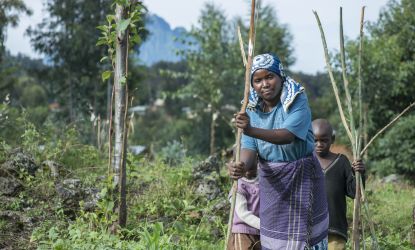
Child marriage in Rwanda
Fifteen million girls are forced to marry each year. Clodine became one of them aged 15, when she was forced to marry her sister’s widower, who was in his sixties.
When he died several years later, Clodine became a single parent of four children. She says:
When I think about the trauma I suffered from marrying so young, it’s like a form of torture. It was my parents who made that decision… I wasn’t involved in it at all."
Clodine has joined an ActionAid-supported cooperative. She can now afford health insurance and cover all her household needs.
“The cooperative has helped my children and me a lot. Now I’m aware of both my rights and the rights of my children. I wouldn’t have married my husband if I knew what I know now about my rights.
“Every evening I teach my children that child marriage is no joke. I also teach them not to have underage sex. Many people have HIV here and it’s important that they protect themselves.”
Clodine was married as a child to a much older man. She joined an ActionAid-supported cooperative so she can be economically independent.
Crystaline Randazzo/ActionAid
How women's groups are tackling VAWG
Women’s rights organisations are the strongest advocates against all forms of violence. They are part of a growing, worldwide movement to stop women and girls being abused by men. These courageous women are standing up and helping other women, often at risk to themselves.
ActionAid supports local women's groups and networks to recognise the signs of violence and report it, help girls get back to school and raise awareness across the community. With ActionAid's support, women and teachers are setting up and expanding Girls' Clubs across the world, which provide safe spaces for girls to share their experiences, learn about their rights and build confidence to report abuse.
Our local staff on the ground help change attitudes by working alongside men and boys and traditional and religious leaders, and by working with women and girls themselves to change their acceptance of violence, discrimination and abuse.
Footnotes
- 1World Health Organisation, Violence against women, intimate partner and sexual violence against women: http://www.who.int/mediacentre/factsheets/fs239/en/
- 2ActionAid (2016) Fearless: Fearless women and girls leading the way, transforming lives: https://www.actionaid.org.uk/sites/default/files/publications/fearless_women_and_girls_- _leading_the_way_transforming_lives.pdf/
- 3WHO: Adolescent pregnancy: https://www.who.int/news-room/fact-sheets/detail/adolescent-pregnancy ↩
- 4ActionAid UK 'Close the gap! The cost of inequality in women's work': https://www.actionaid.org.uk/sites/default/files/publications/womens_rights_on-line_version_2.1.pdf
- 5WHO ‘Global estimates of health consequences due to violence against children’ https://www.unicef.org/violencestudy/reports/SG_violencestudy_en.pdf
- 6Spencer, D. (2015). “TO PROTECT HER HONOUR” Child marriage in emergencies – the fatal confusion between protecting girls and sexual violence. 1st ed. [ebook] London: CARE. Available at: http://insights.careinternational.org.uk/media/k2/attachments/CARE_Child-marriage-in-emergencies_2015.pdf [Accessed 4 Jun. 2017]
- 7UNICEF (2015), ‘A profile of child marriage in Africa’: https://www.unicef.org/media/files/UNICEF-Child-Marriage-Brochure-low-Single(1).pdf
- 8World Health Organisation (n.d.). Adolescent pregnancy. [online] World Health Organization. Available at: http://www.who.int/mediacentre/ factsheets/fs364/en/ [Accessed 4 Jun. 2017]
- 9World Health Organisation (n.d.). Adolescent pregnancy. [online] World Health Organization. Available at: http://www.who.int/mediacentre/ factsheets/fs364/en/ [Accessed 4 Jun. 2017]. Cited in: Spencer, D. (2015). “TO PROTECT HER HONOUR” Child marriage in emergencies – the fatal confusion between protecting girls and sexual violence. 1st ed. [ebook] London: CARE. p.3. Available at: http://insights. careinternational.org.uk/media/k2/attachments/CARE_Child-marriageinemergencies_ 2015.pdf [Accessed 4 Jun. 2017].
Page updated 3 December 2025
